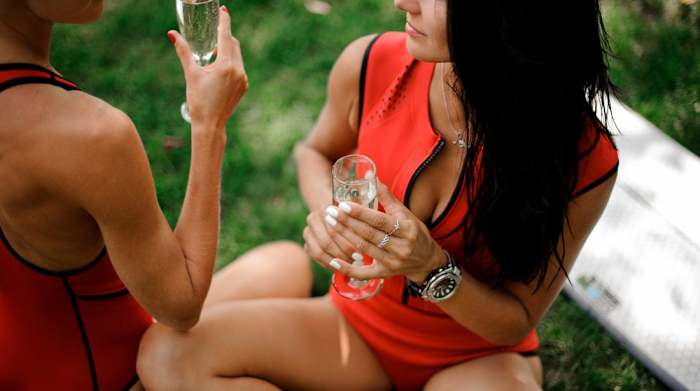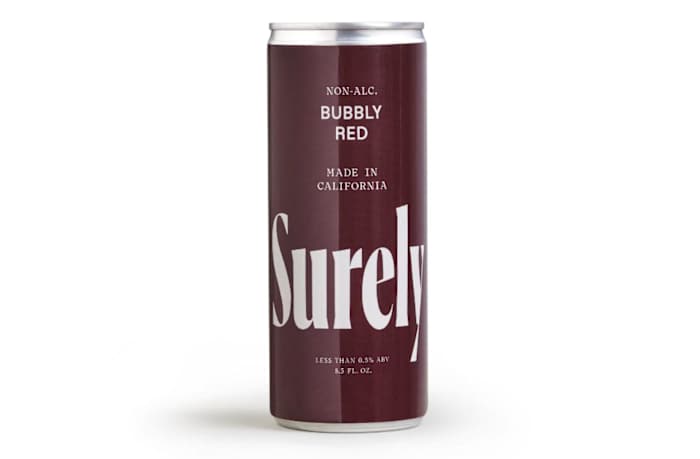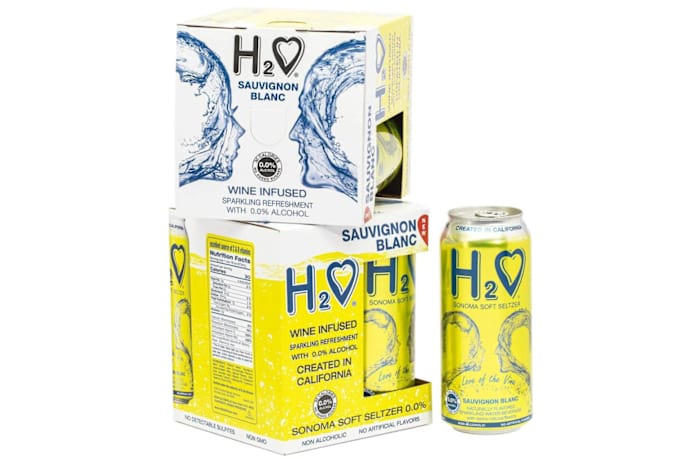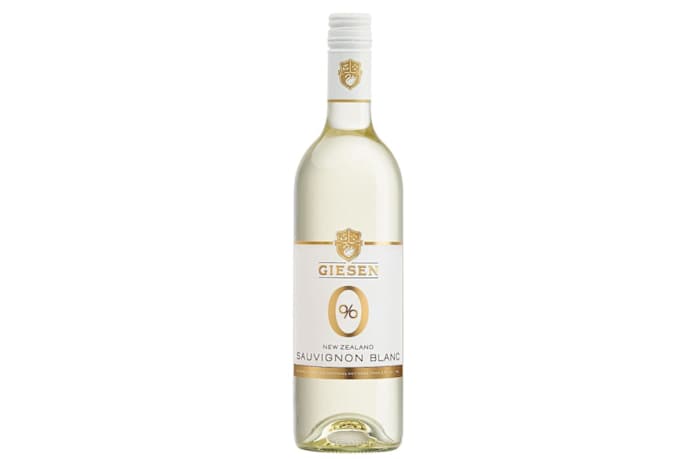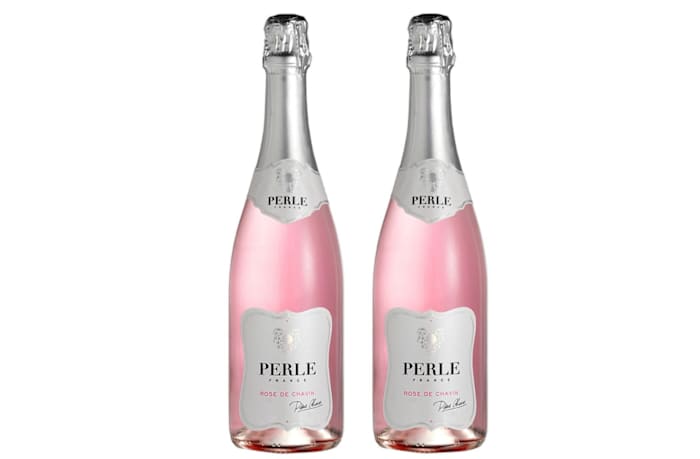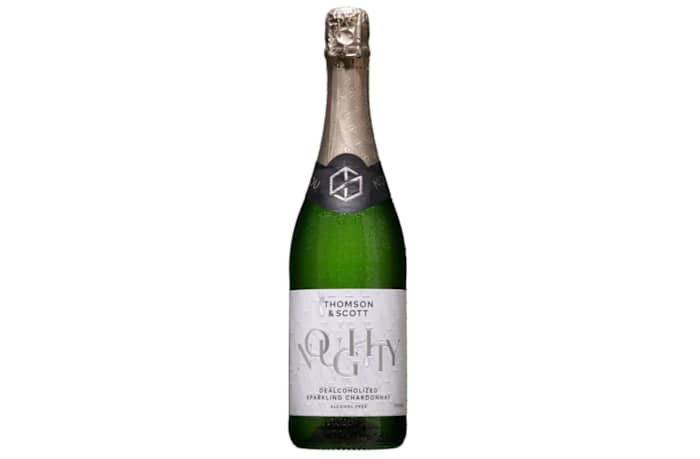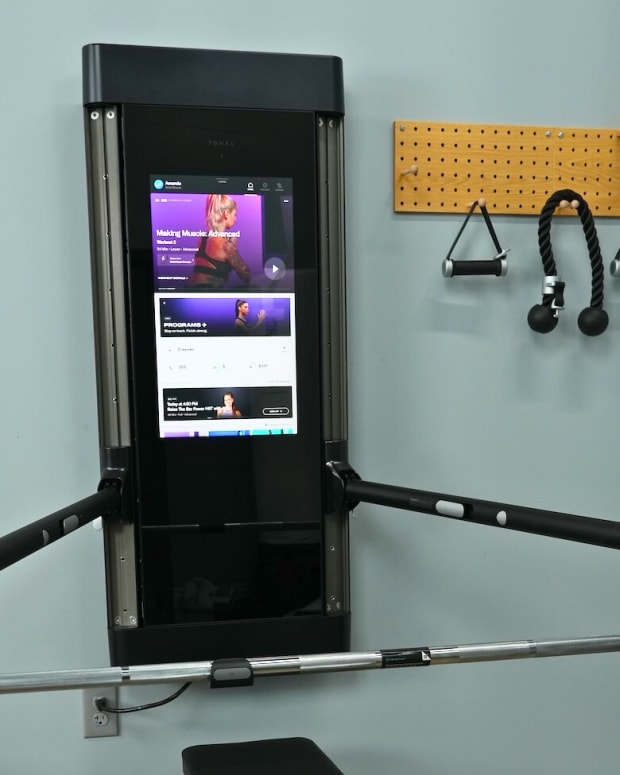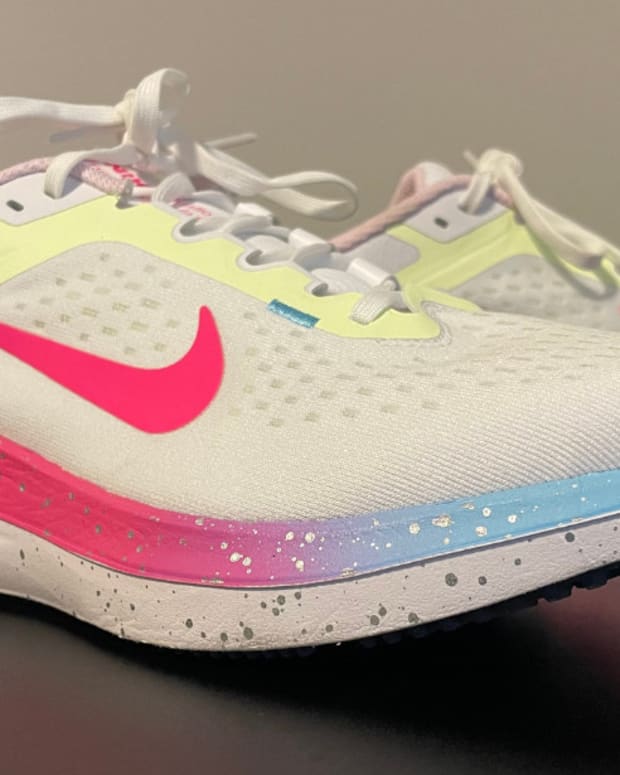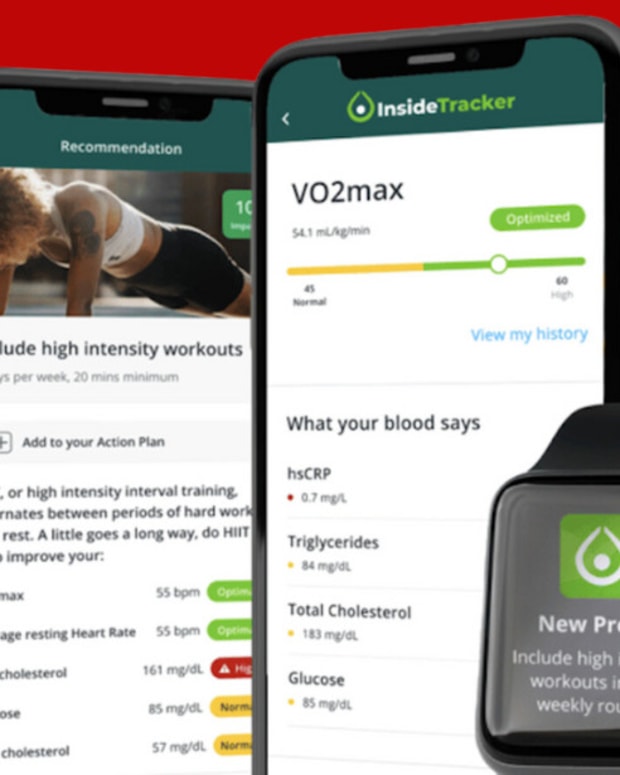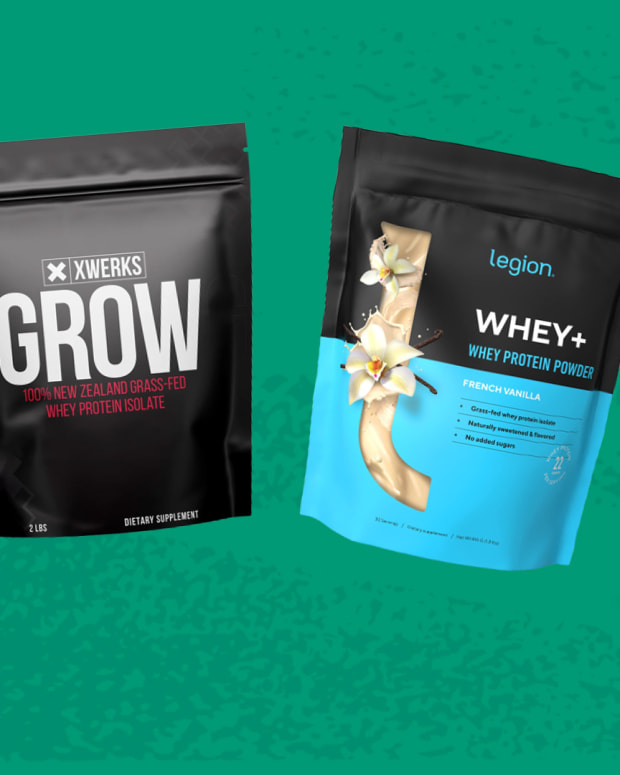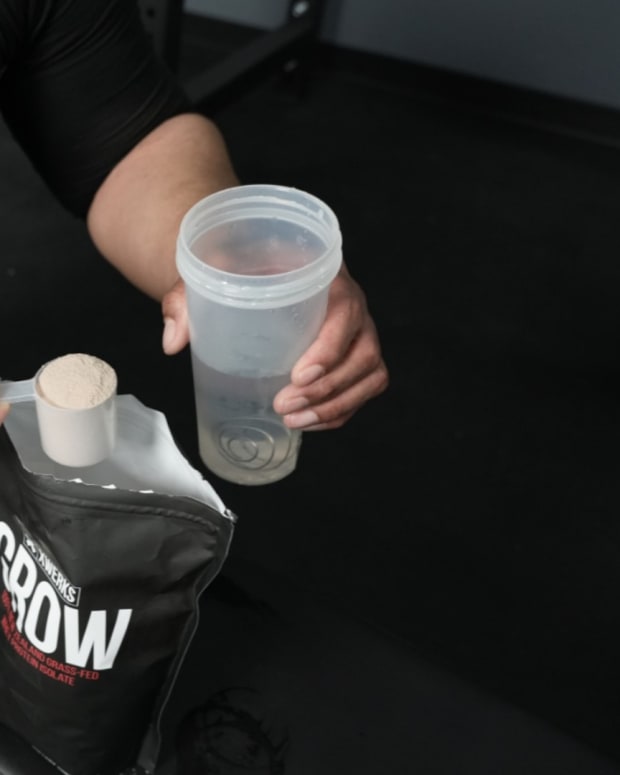The products featured in this article have been independently reviewed. When you buy something through the retail links on this page, we may earn commission at no cost to you, the reader. Sports Illustrated editorial staff are not involved in the creation of this content. Learn more here.
There are numerous reasons why you might not drink. Perhaps you have a baby on the way or find that a night out just doesn’t agree with your current health and performance goals. You might also be sober curious, or examining your current relationship with alcohol. Whatever your reason for cutting out alcohol might be, non-alcoholic beverages like alcohol-free wine can be a healthy–and tasty–alternative to consuming the real thing.
While non-alcoholic wine may not taste 100 percent like real wine, these booze-free alternatives carry very similar flavor profiles that you can enjoy as a designated driver or to celebrate a big occasion with (minus the hangover). They also offer a rich and smooth taste. In fact, most non-alcoholic wine goes through the same fermentation and aging process as real wine, except that the alcohol is removed at the very end.
If you're abstaining from alcohol to work on your wellness and fitness goals, we’ve assembled a list of the best non-alcoholic wine on the market in 2024. These high-quality beverages pack in plenty of flavors and include a variety of red, white and rosé options. Here are the best non-alcoholic wines we’ve found and how to choose an alcohol-free beverage that’s right for you.
Our Picks for the Best Non-Alcoholic Wine:
- Best Non-Alcoholic Red Wine: Surely Non Alcoholic Bubbly Red
- Best Tasting Non-Alcoholic Wine: H2o Sonoma Seltzer Sauvignon Blanc
- Best Non-Alcoholic Sparkling Wine: Surely Sparkling Brut
- Best Non-Alcoholic White Wine: Giesen Sauvignon Blanc
- Best Rated Non-Alcoholic Wine: Pierre Chavin Perle Rose Sparkling Rose
- Best Dry Non-Alcoholic Wine: Thomson & Scott Noughty Non Alcoholic Sparkling White
Best Non-Alcoholic Red Wine: Surely Non Alcoholic Bubbly Red
Key Features & Specs:
- Dealcoholized red wine blend
- Made with sustainable, locally-sourced grapes
- Light and bubbly body with a dry finish
- Single-serving cans
If you’re a fan of red wine, especially Cabernet Sauvignon and Pinot Noir, Surely Non Alcoholic Bubbly Red can satisfy your cravings without any of the alcohol. Available on Amazon, this red blend is produced in California and made with 100 percent locally-sourced and sustainable cabernet sauvignon and pinot noir grapes. Its taste is a fruity blend with notes of dark cherry, blackberry, plum and black currant–slightly tart and sweet–and hints of French oak and baking spices. As for the scent, prepare to enjoy cassis, vanilla, pepper, oak and cherry.
With a light and bubbly finish, these conveniently-canned red wines can be enjoyed on the go and are especially refreshing for sunny pool days or picnics. You also don’t have to worry about committing to an entire bottle, as each bottle can contain just one serving. A dry finish and not overly sweet taste make this non-alcoholic red wine a great pairing option for savory or heavier dishes like pizza, tacos, and barbecued or roasted meats.
Coming in at only 35 calories per serving and four total grams of sugar, Surely Non Alcoholic Bubbly Red–which costs $26.99 for a pack of four cans–can be enjoyed with a variety of foods and occasions. This non-alcoholic red blend is also gluten-free, vegan and non-GMO.
What we like:
- Convenient, single-serving cans
- Low in sugar and calories
- Accommodates a variety of diets
- Goes well with savory, heavier dishes
What to consider:
- Expensive per serving
- Bubbly finish may not be for everyone
Best Tasting Non-Alcoholic Wine: H2o Sonoma Seltzer Sauvignon Blanc
Key Features & Specs:
- Single-serving cans
- Includes 100 percent daily value of vitamins C and B12
- Made with water from the Sonoma Valley
- Contains electrolytes for hydration
Those who love the acidity and herbal flavors of Sauvignon Blanc will enjoy the alcohol-free spin that H2o Sonoma Seltzer Sauvignon Blanc puts on the white wine classic. Our number one non-alcoholic sauvignon blanc comes in as our best tasting because of its refreshing finish and slightly sour taste, which packs a flavorful punch while keeping you hydrated at the same time.
As a cross between sparkling seltzer water and traditional sauvignon blanc, this dealcoholized white wine is infused with unfermented wine grapes, purified water from California’s Sonoma Valley, electrolytes, vitamins, potassium, magnesium and even antioxidants—so you can truly feel good about drinking this beverage. In fact, studies show that antioxidants can do wonders for your health, offering anti-aging and anti-inflammatory benefits. This can also be helpful for wellness enthusiasts looking to cut back on alcohol-induced inflammation.) Plus, each single serving can contain 100 percent of the daily value of vitamins C and B12, plus 30 percent of the daily value of potassium.
In addition to its flavorful punch, H2o Sonoma Seltzer Sauvignon Blanc–which costs $23.87 for four cans–has high standards for production. These canned alcohol-free white wines have no added sugar, artificial sweeteners, preservatives or detectable sulfates. They’re also gluten-free and non-GMO. Still, if you’re not a fan of sauvignon blanc, the brand produces a variety of non-alcoholic canned wines that include Pinot Noir, Rosé, Cabernet Sauvignon and Moscato.
What we like:
- Free of potentially harmful ingredients
- Made with antioxidants and electrolytes
- Convenient, on-the-go design
- Dry and slightly sour taste
What to consider:
- High vitamin levels may not work for everyone
- Somewhat high in sugar at nine grams per serving
Best Non-Alcoholic Sparkling Wine: Surely Sparkling Brut
Key Features & Specs:
- Dealcoholized brut
- 25 calories per serving
- Made with California grapes
- Single-serving cans
Brut champagne is a dry sparkling wine often used to celebrate special occasions. If you’re not drinking, you can still pop a bottle (or can, in this case) of tasty and crisp non-alcoholic brut. Surely Sparkling Brut is a dealcoholized white wine made with sustainable California grapes. Its unique flavor profile includes hints of lemon, peach and passionfruit, giving it a slightly acidic yet floral taste. With the scent, you’ll notice guava, citrus and melon–equal parts tart and sweet.
As a dry and sharply acidic non-alcoholic wine, Surely Sparkling Brut pairs well with slightly salty, celebratory foods (not unlike the real thing). This beverage is a great fit alongside crudité, charcuterie, caviar, oysters, bruschetta and ceviche, a.k.a., foods you’ll find at a New Year’s Eve party or other big occasion. You can also use this wine to make non-alcoholic mimosas and dry and bubbly mocktails.
Like the first Surely dealcoholized wine on our list, this brut comes in convenient, single-serving cans ($24.99 for a pack of four) that you can take with you to any occasion. One can has a mere 25 calories and five grams of sugar, and includes natural ingredients like guava concentrate and grapefruit juice. For additional sparkling options, Surely also offers a sparkling rosé and a sparkling rosé and brut blend (bridging together the best of both worlds).
What we like:
- Champagne alternative can be used for special occasions
- Mixes well into non-alcoholic mimosas and mocktails
- Unique acidic yet floral flavor
- Low in calories and sugar
What to consider:
- Expensive per serving
- May be too dry for some tastes
Best Non-Alcoholic White Wine: Giesen Sauvignon Blanc
Key Features & Specs:
- Dealcoholized sauvignon blanc wine
- Manufactured in New Zealand
- 750-milliliter bottle
- Paleo and vegan
While Napa Valley and Italy’s Tuscany region are hailed as some of the world’s most popular wine producers, New Zealand is a thriving wine region known for its bold and flavorful grapes. The same can be said for the New Zealand-produced Giesen Sauvignon Blanc, a dealcoholized Sauvignon Blanc wine made from green-skinned grapes and a small dash of grape juice.
As an excellent pairing option for lighter dishes, this booze-free sauvignon blanc—which costs $12.99 per 750-milliliter bottle—is the perfect complement to appetizers, fresh salads and lighter portions of pasta tossed in olive oil. It’s best served chilled and includes a delicate flavor profile of fresh lime, redcurrant and lemon shortbread (the last of which we especially love). It also has notes of citrus flavors, blackcurrant and passionfruit, giving it a slightly acidic and tart finish.
Whether you’re a fan of dry white wine or are simply looking for a light summer beverage (without any of the alcohol), Giesen Sauvignon Blanc easily takes the cake as our top pick. However, since this white wine comes in a standard-sized bottle, you’ll have to commit to finishing it within two-to-three days or sharing it with a table at a party or an event.
What we like:
- Crisp, clean flavor
- Goes well with salads and lighter dishes
- Only 19 calories per 5 ounce pour
- Produced at a family winery
What to consider:
- Bottle will only stay fresh for two to three days
- May be too light for certain dishes
Best Rated Non Alcoholic Wine: Pierre Chavin Perle Rose Sparkling Rose
Key Features & Specs:
- Chardonnay blend from southern France
- Comes in 200- or 750-milliliter bottles
- Available on Amazon in various packs
- Sweet and fruity flavor profile
Whether you’re hosting a baby shower or a Super Bowl party, good Rosé wine is often one of the best options to toast with on a special occasion. However, if you’re abstaining from alcohol, you don’t have to miss out on this beloved wine variety. Enter Pierre Chavin Perle Rose Sparkling Rose, a non-alcoholic rosé wine that has the same attractive packaging and pale pink color as its boozy counterpart.
Produced in the south of France, this sparkling chardonnay comes in at the high end of sweet and has a fruity flavor that’s low in acidity and dryness. It has the traditional delicate pink color of rosé and is flavored with hints of rose petals. Thanks to its light yet sweet finish, Pierre Chavin Perle Rose Sparkling Rose works well with light meals, salads, seafood, appetizers and even desserts (you could go for a double-pink experience with strawberry shortcake and this rosé).
As a special occasion wine, Pierre Chavin Perle Rose Sparkling Rose runs on the pricier side at $60 for two 750-milliliter bottles, or $30 apiece. However, you can buy smaller variations of 200 milliliters or in various packs on Amazon that span anywhere from one to six bottles per pack.
What we like:
- High-end design and finish
- Ideal for special occasions
- Cork-sealed for maximum freshness
- 0.0 percent ABV (alcohol by volume)
What to consider:
- Expensive at $60 for two 750-milliliter bottles
- Rosé wine may be too sweet for some
Best Dry Non-Alcoholic Wine: Thomson & Scott Noughty Non Alcoholic Sparkling Wine
Key Features & Specs:
- Dealcoholized sparkling chardonnay
- Comes as a 750-milliliter bottle
- Vegan and halal-certified
- Made with organic grapes from Spain
There are many benefits to enjoying dry wine. You’ll get a crisper, more refreshing taste without the sugary mouthfeel of sweeter varieties. Our favorite non-alcoholic dry wine is Thomson & Scott Noughty Non Alcoholic Sparkling Wine, a dealcoholized sparkling chardonnay made with organic grapes from Spain. This lightly-carbonated beverage comes in a classic, 750-milliliter bottle that costs $25.99, making it an affordable, upscale choice for special events or everyday enjoyment.
This sparkling chardonnay gives off a musky, toasty scent and washes down nicely with appetizers or mild, buttery dishes. After the carbonation fades off, you’re left with a crisp white wine that tastes best when chilled. In case you follow halal standards, you’ll be happy to know Thompson & Scott Noughty Non Alcoholic Sparkling Wine is both halal and entirely vegan.
In addition to chardonnay, fans of dry wine can also consider Cabernet Sauvignon, Sauvignon Blanc, Syrah and Zinfandel varieties, all of which come in non-alcoholic forms.
What we like:
- Luxury wine at an affordable price point
- Organic grapes are used in production
- Light bubbles turn into smooth wine
- Pairs well with hors d'oeuvres
What to consider:
- Bubbles can go flat quickly
- May not be as refreshing as other white wine varieties
What is a Non-Alcoholic Wine?
The labels might get a little tricky, but here’s how non-alcoholic wine is essentially broken down. Non-alcoholic wine comes in two varieties: wine alternatives and dealcoholized wines. Both serve the same purpose–to provide consumers with an alcohol-free beverage–but differ in the way they’re produced. Wine alternatives, for example, will have the same (or similar) flavor and texture as real wine, but were never made with alcohol in the first place. Dealcoholized wines, on the other hand, go through the same fermentation and aging process as real wine, but have their alcohol removed at the end of the process–rendering them booze-free.
Dealcoholized wines generally carry labels such as “zero alcohol” or “alcohol-free.” This means that that particular non-alcoholic wine has gone through a process that removes most or all of the alcohol. One thing to keep in mind is that even dealcoholized varieties of non-alcoholic wines may carry trace amounts of alcohol–up to 0.5 percent alcohol per volume. So, if you’re pregnant or don’t drink due to your religion, you may want to opt for a wine alternative instead.
You’ve probably heard about the many heart-healthy benefits of drinking red wine in particular, and the good news is, you can still experience those benefits by drinking non-alcoholic red wine. Studies show that like its boozy counterparts, alcohol-free wine is still rich in resveratrol, a powerful antioxidant found in plant sources like red grapes and blueberries. Research shows that resveratrol can boost brain function, lower blood pressure and slow down aging. Plus, since alcohol is high in calories, non-alcoholic wine has a fraction of the calories of regular wine.
Adopting a non-alcoholic lifestyle can even help improve athletic performance. Studies have found that alcohol can reduce performance the day after drinking, and since alcohol can dehydrate you, leading to decreased athletic performance–not to mention feeling crummy in general during your workouts. This is why many serious athletes choose to cut out alcohol.
Related Post: The Best Non-Alcoholic Drinks to Try
How Is Non-Alcoholic Wine Made?
Four methods for making non-alcoholic wine are currently approved by the Bureau of Alcohol, Tobacco and Firearms: thin-film evaporation, reverse osmosis, spinning cone distillation and thermal gradient processing. Here’s how each process works to remove alcohol from wine.
In thin-film evaporation, or vacuum distillation, wine is heated high enough to make the alcohol content evaporate. Reverse osmosis, meanwhile, is a process where wine passes through a very tight filter that catches specific sizes of alcohol, therefore separating it from the wine (one way to think of reverse osmosis is straining pasta from water). Spinning cone distillation is a low-temperature separation process that uses steam to extract alcohol compounds from wine.
Lastly, thermal gradient processing cools wine to the point of forming ice crystals, which float to the top of the tank. In exchange, the alcohol content increases in the liquid portion, and is then drained by half. As the ice crystals are melted, they mix back in with the liquid, creating a diluted wine with less alcohol content. Of these non-alcoholic winemaking methods, reverse osmosis and spinning cone distillation are the two most commonly used by wine producers.
What Are the Qualities of a Good Non-Alcoholic Wine?
The best non-alcoholic wines are the ones that taste the most similar to traditional wine. While most non-alcoholic wines won’t be as full-bodied as alcoholic wines, simply because they don’t have the heaviness of the alcohol content, a great alcohol-removed wine shouldn’t taste much different. Non-alcoholic wines made through a high-quality process should retain the same flavors and finish as their alcoholic counterparts and even have the same scent and aromas.
How to Choose the Best Non-Alcoholic Wine for You
Like traditional wines, no two non-alcoholic wines are alike. Depending on the wine variety, flavor and region in which the wine is produced, you might get an entirely different taste from one wine to the other. Luckily, as non-alcoholic beverages grow in popularity and are embraced more and more by the fitness community, so do the number of booze-free wines available on the market. Here’s how to choose the best non-alcoholic wine for your health or fitness goals.
Type of Non-Alcoholic Wine
Non-alcoholic wine comes in two forms: wine alternatives and dealcoholized wine. Since dealcoholized wines may contain trace amounts of alcohol up to 0.5 percent per volume, you may want to gravitate towards a wine alternative if you abstain for religious reasons or a medical condition where consuming alcohol isn’t recommended. Still, you shouldn’t be in for a surprise - most wines will explicitly state exactly how much alcohol is included, even if it’s zero percent.
Wine Varieties
There are thousands of grape varieties grown across the world, and while the exact number is hotly debated, one thing is for certain: wine comes in many varieties and forms. If you’re a wine lover, you may already know which varieties are your favorite. However, if you’re new to wine or simply aren’t familiar with the different kinds, here’s a basic breakdown.
Wines generally come in red, white or rosé (pink) varieties. Most rosé wines run on the dry side (meaning they aren’t sweet), but a handful are sweeter for more of a dessert taste. In the red wine category, dry wines include Cabernet Sauvignon, Pinot Noir, syrah and Bordeaux varieties. Off-dry or semi-sweet reds include Merlot, Malbec and Zinfandel. As for a very sweet or dessert red, port wine tends to be the most popular choice.
Dry white wines include pinot grigio (arguably the driest variety), chardonnay, Sauvignon Blanc and Pinot Gris. Getting slightly sweeter are Moscato and Riesling, which are often paired with dessert. For an ultra-sweet white wine, ice wine, which is made from grapes that grow in frozen climates, will net you the most sugary taste.
Flavor Profile
While narrowing down to a specific wine variety or two can help make sure your non-alcoholic wine choices meet your personal preferences, wines can have a huge variation in flavor - even from one chardonnay to another. For example, you may find a chardonnay with hints of green apple and cranberry, and another with notes of apricot and ginger. If the taste of pineapple makes you queasy, for example, you may want to avoid wines with tropical flavor profiles.
Consider your tastes and which flavors you enjoy most, then seek them out in a bottle of wine. Still, it’s a good idea to be open-minded, because you may find a wine with a surprising flavor profile that you truly enjoy, but would have never gravitated to right off the bat.
Region
It may come as a surprise, but the region in which your wine is produced can have a major impact on flavor and finish. That’s because grapes can taste different depending on the soil, environment, sunshine and overall weather in which they’re grown. If you’re not sure which wine-producing region you’re a fan of most, we recommend trying different varieties until you find a region (or two) that best suits your taste buds. Wine is produced all over the world, with some of the most popular regions found in Italy, France, California and Spain.
Cost
Depending on the brand and type of non-alcoholic wine you buy, prices can vary. One thing to keep in mind is that you’ll likely pay more for canned varieties, simply because more packaging is used. Special occasion wines like rosé and brut often, but not always, cost more than traditional red or white varieties, so be sure to budget correctly when purchasing beverages.
Our Methodology: How We Chose the Best Non-Alcoholic Wine
We chose the best non-alcoholic wine based on a number of factors. First and foremost, taste was a top priority when comparing different wines. We also chose a selection of wines that met different preferences, including a mix of sweet and dry, and white, red and rosé wines. Flavor profiles, aromas and wine production processes were also considered in the process, as were customer reviews and brand reputation. Lastly, we considered packaging, including bottled wines versus more convenient on-the-go options such as packs of single-serving cans.
Non-Alcoholic Wine FAQs
Here’s everything else there is to know about alcohol-free wine.
Does non-alcoholic wine taste like grape juice?
Since dealcoholized wines are produced exactly the same way as traditional wines (with the alcohol removed at the very end of the process), they’ll maintain a similar flavor profile to the actual thing–meaning they shouldn’t taste like grape juice. On the flip side, sparkling grape juice (a different product) is sometimes used in place of wine for people who don’t drink.
Can you still get drunk on non-alcoholic wine?
While dealcoholized non-alcoholic wine may contain trace amounts of alcohol, law requires that drinks labeled as non-alcoholic contain less than 0.5 percent alcohol by volume. Therefore, your chances of becoming drunk from consuming non-alcoholic wine are next to zero.
Related Post: The Best Hangover Supplements
How long does non-alcoholic wine last after opening?
Like traditional wine, once you’ve opened a bottle of non-alcoholic wine, it’s best to consume it within two to three days for maximum flavor and freshness. You may be able to stretch the window to five days, but it’s best to enjoy your alcohol-free beverage in a shorter timeframe.
Does non-alcoholic wine have fewer calories?
Since alcohol packs on calories, non-alcoholic wines have significantly fewer calories–upwards of one-fourth or even one-sixth of the calories of regular wine. This makes alcohol-free wines not only a tasty non-alcoholic option but a great addition to a weight loss diet where you can still enjoy the flavor and mouthfeel of wine with a fraction of the usual calories.
Is zero-alcohol wine really alcohol-free?
Zero-alcohol wine is virtually alcohol-free, meaning it contains less than 0.5 percent alcohol by volume (regular wine, by comparison, typically has 11 to 13 percent alcohol). This means that alcohol-free wine may have trace amounts of alcohol, so this is something to consider if you abstain for religious reasons or health purposes (such as pregnancy or a medical condition).
Takeaway: Is Non-Alcoholic Wine Worth Trying?
If you're a wine lover exploring a sober curious lifestyle, or you’re cutting back on drinking to pursue your health or fitness goals, you can still enjoy the smooth and refreshing taste of wine without consuming the alcohol (and the next-day hangover that can hamper athletic performance). Instead of regular wine, non-alcoholic wine is absolutely worth trying–and if you’re unsure which brand to taste first, check our list for our best non-alcoholic wines of 2024.
Prices are accurate and items in stock as of publish time.
